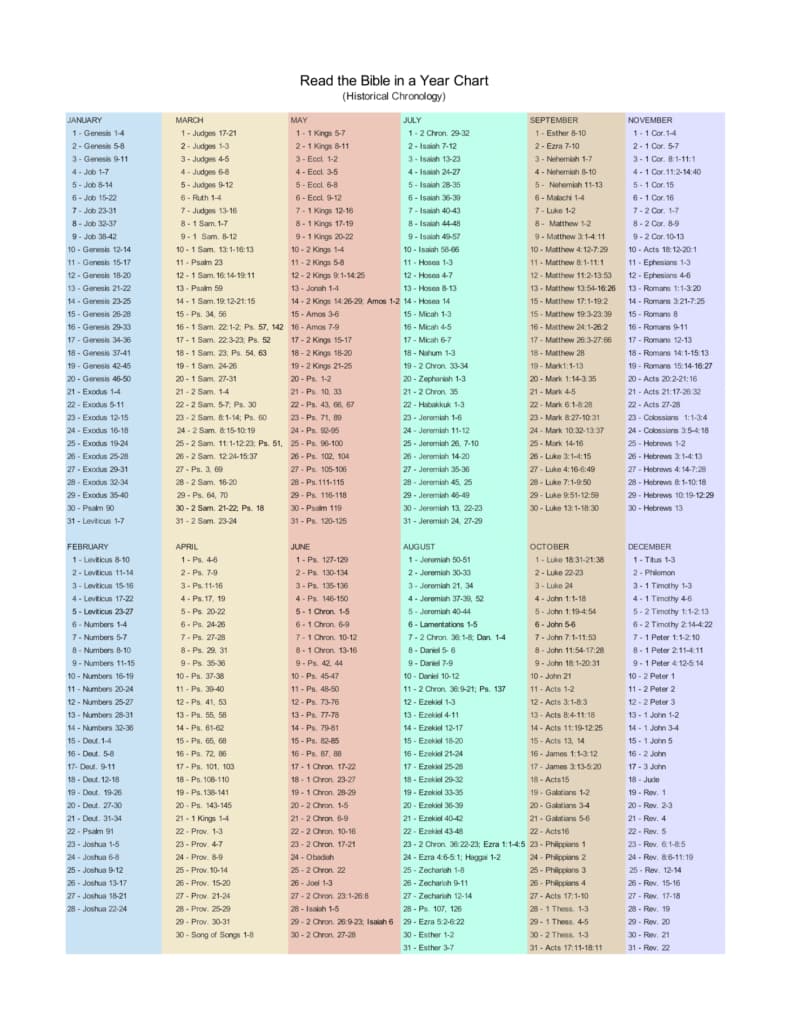I don’t know anyone who enjoys reading books where they jump around reading various chapters out of order. For example, let’s consider the classic children’s book Alice’s Adventures in Wonderland by Lewis Carroll. If you were to read the chapters randomly, it would create a nonsensical and disjointed experience. The story follows Alice as she falls down a rabbit hole and encounters various strange characters and situations. If you were to read Chapter 1, then skip to Chapter 5, followed by Chapter 2, and so on, the story would lose its coherence. You might find Alice shrinking and growing without understanding why, encounter the Queen of Hearts before meeting the Cheshire Cat, or witness the Mad Hatter’s tea party without any context.
Reading the Bible book by book in table of contents order may give you the same sense of randomness, disjointedness, and ambiguity. The Old Testament was not meant to be read in the order of the books but yet so many attempt to do so and then cannot understand why the story of Scripture has not come alive to them more than it has.
However, reading the Bible chronologically can offer a unique perspective on the events and themes presented in the text. Rather than reading the Bible in the traditional book order, which can sometimes feel disjointed and difficult to follow, reading chronologically can provide a better understanding of how events are connected and how they build upon each other.
The Bible is organized by categories of books rather than chronologically. In the Bible, the Old Testament is divided into four main sections: the Pentateuch, the Historical Books, the Wisdom Literature, and the Prophets (major and minor). The New Testament is also categorized into four sections: the Gospels, Historical Writing, (Acts), the Letters or Epistles, and Prophecy (Revelation). While this organization makes it easier for readers to locate specific books and passages, it can sometimes make it difficult to understand the historical and chronological context of the events and teachings presented in the text.
One of the benefits of reading the Bible chronologically is that it can help readers see the overarching story of redemption that is woven throughout the entire text. By following the timeline of events, readers can gain a clearer understanding of how God’s plan of salvation unfolds over the course of history, from the creation of the world to the ultimate triumph of Christ.
Another advantage of reading the Bible chronologically is that it can help readers contextualize the different books and passages within the larger historical and cultural context of the time. This can provide deeper insight into the meaning and significance of certain events and teachings and can help readers better understand how they apply to their own lives today.
Each book of Scripture can stand alone and is the inspired Word of God, but reading each book within the grand story chronologically provides a beauty, richness, and greater meaning that otherwise may feel elusive. I recently talked with a retired man who has read through his Bible multiple times each year for the past several years, but he said he always reads it in book order. I challenged him to read chronologically. He emailed me several weeks later saying what a blessing it was to read Scripture in the fresh new way that gave him such clarity. Overall, while there is no one right way to read the Bible, reading chronologically can offer a unique and valuable perspective that can deepen one’s understanding and appreciation of this book that guides our decision making and life. If you are unfamiliar with a chronological reading plan, check out biblehub.com/timeline/ or print the one below.






